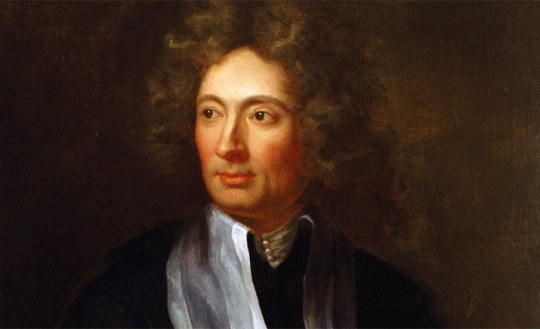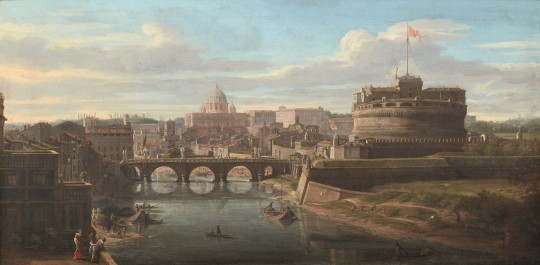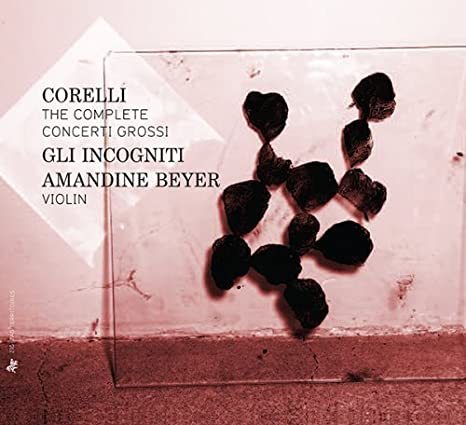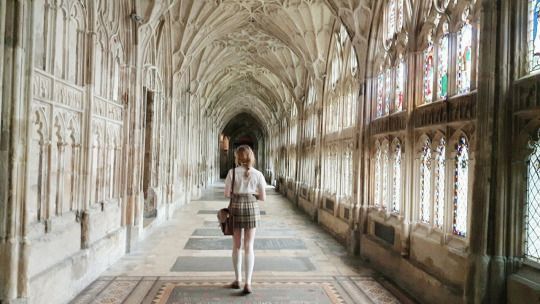#Concerti grossi op 1
Text
Some Locatelli Concerti Grossi;
I’m looking for a Sims 3 Auditorium/Concert Hall that I can use in Chapters 6-8 of The Chikamori Legacy.
Also does anyone know how to control 25+ Sims so that they don’t get out of their confounded chairs. Secondly, I need to find a music stand (Sims 3). It’s gonna be tough to make an baroque orchestra with no music stands.
Sure wish someone comes up with other instruments. 😁
#baroque music#sims 3#sims 3 gameplay#ts3#river mcirish#sims 3 storytelling#river and haruo#sims 3 legacy#haruo chikamori#the chikamori legacy#pietro locatelli#Concerti grossi op 1#Spotify
11 notes
·
View notes
Text
Wassenaer's Concerti Armonici....*chef's kiss*
Something about the baroque concerto grosso genre will always get me.
#bach's brandenburgs#vivaldi's op. 3#handel's opp. 3 & 6#locatelli's op. 1#corelli's op. 6#hellendaal's op. 3#like just give me all the concerti grossi#oh how could i forget richard mudge's concertos!!!#john stanley's are also nice
0 notes
Text

Locatelli + Wallfisch - 12 Concerti
Grossi, Op 1. 1995 : Hyperion.
! listen @ Apple Music ★ buy me a coffee !
#classical music#baroque#pietro locatelli#1995#hyperion#concertos#concerto grosso#Elizabeth Wallfisch#Nicholas Kraemer#Raglan Baroque Players#1990s#1990s classical
2 notes
·
View notes
Text
Concerto grosso
Giuseppe Valentini (14 dicembre 1681 - 1753): Concerto grosso in la maggiore (pubblicato in Concerti grossi a quattro e sei strumenti op. 7, Roma c1710, Libro I n. 1). Ensemble 415, dir. Chiara Banchini.
Adagio – Allegro
Vivace [3:05]
Allegro [7:24]
Affettuoso [9:07]
youtube
View On WordPress
0 notes
Note
say i was making a playlist abt ballet dancers going from rivals to lovers and wanted some classical composition recs that might mirror the journey, would u have any lmao
ahh this is honestly such a personal thing i think. i can tell you the pieces that hold that kind of tension for me but it might not resonate w your conception of these characters and their journey. but here are a few ideas:
concerti grossi a quatro e sei strumenti, op. 7, libro secondo, concerto no. 11 in a minor: iv. allegro e solo, giuseppe valentini / violin sonata no. 1 in g minor, bwv 1001: ii. fuga: allegro, j.s. bach / partita no. 2 in c minor, bwv 826: ii. allemande, j.s. bach / capriccio for 2 violins op. 8 no. 14, “per sonare il violino con tre corde a modo di lira”, biagio marini / serenade for strings in e major, op. 22, b. 52: ii. tempo di valse, antonín dvorak / piano concerto no. 21 in c major, k. 467 “elvira madigan”: ii. andante, w.a. mozart / piano trio no. 2 in e-flat major, op. 100, d. 929: ii. andante con moto, franz schubert / 13 pieces for piano, op.76: 2. etude, jean sibelius / adagio & fugue, wilhelm friedemann bach / viola d’amore concerto in a minor, rv 397: i. vivace, antonio vivaldi / orfeo ed euridice, wq. 20 - arranged sgambati, act 2: melodie dell’orfeo, christoph willlibald gluck / adagio cantabile from piano sonata no. 8 in c minor, op. 13 “pathetique”, instrumental, beethoven / piano sonata no. 12 in f major, k. 332: ii. adagio, w.a. mozart
eta: here is the link to playlist on spotify
#a few classical era pieces for the y e a r n i n g#but honestly baroque era music is sexy as hell to me#bigfoot-unfiltered#ask#replies#classical music#for the yearning you really can’t go wrong w the second movement of classical era pieces#usually andante and so heartbreakingly tender <3
88 notes
·
View notes
Text
Composed by [famous composer]...or was it?
For the week of February 14th through February 21st, I will be posting pieces of music that have been thought to be composed by a famous composer but, after being analyzed by musicologists, have:
been determined to have been composed by someone else entirely and whose identity remains a mystery
had its authorship doubted based on stylistic grounds
had its authorship disputed because it may have possibly been composed by someone else and/or exists in another composer’s catalogue
The pieces that will be uploaded this week are as follows:
Sunday, February 14th: Sinfonia Concertante for Four Winds and Orchestra in E-flat Major, KV 297b, II. Adagio - Attributed to Wolfgang Amadeus Mozart, but authorship is doubted.
Through letters, it is known that Mozart apparently composed a piece with the specific scoring of KV 297b, but the original score has been lost. An anonymous copy (KV 297b) was discovered in 1869 in the collection of Otto Jahn. Although originally being uncritically attributed to Mozart, musicologists have found that, stylistically, the piece may not be his, with musicologist Donald Tovey even describing it as “blundering” and “inept.”
Monday, February 15th: Sonata for Violin and Harpsichord in F-Major, BWV 1022, II. Allegro e presto - Attributed to Johann Sebastian but authorship doubtful; may have been written by his son Carl Philipp Emanuel.
While the piece is currently attributed to Sebastian and shares some similarities to the Violin Sonata in G-Major (BWV 1021), which is unequivocally his, its authenticity is called into question. His son Emanuel is the possible composer.
Tuesday, February 16th: Concerto for Violin, Strings and Basso continuo in b-minor, formerly RV 385, II. Allegro - Formerly attributed to Vivaldi.
This work was determined to have been not been written by Vivaldi, presumably on stylistic grounds. The composer of the work has not been identified.
Wednesday, February 17th: Concerto for Solo Harpsichord in b-minor, TWV 33:Anh.1, I. Allegro - Attributed to Georg Philipp Telemann but authorship doubted.
This concerto for solo harpsichord is presumably an arrangement of a lost violin concerto by Telemann (TWV 51:h3). The work exists in his TWV catalogue’s appendix, and his authorship has been called into question because of the lack of the original score of the alleged violin concerto and for stylistic reasons. The leading of the solo parts in uniform sixteenth triplets seems out of place for Telemann, as does the recitative nature of the work’s second movement.
Thursday, February 18th: Concerto for Cello (or Violoncello Piccolo), Strings and Basso continuo in G-Major, RV Anh. 146 (formerly RV 415), III. Alla breve - Attributed to Vivaldi but authorship highly doubted.
While the concerto's genuineness went undoubted for a time, major stylistic changes called Vivaldi’s authorship into question. The final movement contains a fugal style that is not found in any of Vivaldi’s other cello concertos. It also does not match the style of fugues found in his violin concertos. Additionally, the titling of the second movement, “Siciliana,” was not used by Vivaldi in instrumental concertos with 12/8 slow movements. The piece has been removed from the main catalogue (RV 415) and added to the appendix (RV Anh. 146).
Friday, February 19th: Sonata for Violin and Basso continuo in c-minor, BWV 1024, IV. Vivace - Attributed to Johann Sebastian Bach but may have been written by Johann Georg Pisendel.
This violin sonata is traditionally associated with Bach, but further research suggests that it may have been written by Pisendel or even may have been a collaboration between the two composers (Köpp, Kai, Johann Georg Pisendel (1687-1755) and die Anfänge der neuzeitlichen Orchesterleitung, 2005).
Saturday, February 20th: Concerto for Flute, Violin, Strings and Basso continuo in e-minor, TWV 52:e3/Seibel 218, III. Presto IV. Adagio V. Allegro - Composed by either Georg Philipp Telemann or Johann David Heinichen.
The piece is listed in Telemann’s catalogue as TWV 52:e3 while some sources have listed the piece in Heinichen’s catalogue as Seibel 218. The piece has been recorded by different ensembles with some attributing the work to Telemann and others attributing it to Heinichen.
Sunday, February 21st: Concerto grosso in F-Major, Op. 3 No. 4b, IV. Allegro - Anonymous composer, formerly and erroneously attributed to George Frideric Handel.
The “Concerto grosso No. 4b” was formerly and erroneously attributed to Handel by the publisher John Walsh and was originally included in Handel’s Op. 3 set of Concerti grossi. The error was fixed, and, possibly by the request of Handel himself, the piece was removed from the set and was replaced by the correct Concerto grosso in F-Major (sometimes referred to as “Op. 3 No. 4a”). The dubious concerto is now currently referred to as “Op. 3 No. 4b” instead of “Op. 3 No. 4″. The original composer of this concerto is currently unknown.
sources: [x] [x] [x] [x] [x x (two different recordings of the Heinichen/Telemann concerto with attribution to either composer)] [x] [x]
12 notes
·
View notes
Audio
(vía https://open.spotify.com/track/2fhMBYggD7r4nUDu8PLJWj?si=5Kw3doT8QtWppmN6pG1ZSQ)
0 notes
Text
Day 26: Arcangelo Corelli - Concerti Grossi

Arcangelo Corelli (1653 – 1713), was a son a well-off landowning family (not nobility though) from a small town near Italian Ravenna. There isn’t much reliable contemporary sources documenting events in his earlier life. What is known is that he had first studied music under a priest in the nearby town of Faenza, and then in Lugo, before moving to Bologna in 1666 where he studied violin. It it not entire clear how long he stayed in Bologna. There are suggestions that he has traveled outside Italy to France, Germany and Spain around this time, but these are not supported by any contemporary evidence. The same is unfortunatelly true about his arrival to Rome. It is not clear, when exactly did he move to Rome. But we know that by 1975 he was there and was employed in the church of San Giovanni dei Fiorentini as one of the violinists and doing several other jobs in other churches as well. He won a support of a wealthy music-loving partron Cardinal Ottoboni (nephew of Pope Alexander VIII) and went on to provide music for his household. The fame of the weekly concerts held there spread all over Europe and Corelli’s reputation as the leading violinist of his day, together with the widespread publication of his music, placed him among the most influential musicians of the period. He worked shortly in Modena and also in Naples, but he spent the majority of his later life in Rome primarily writing for Cardial Ottoboni. (1)


He was a masterful violinist and his compositions and performances pushed the technique of violin playing so much forward, that even today, there are violinists who proudly trace their “lineage” through their teachers, and their teachers’ teachers, back to Corelli himself. He introduced playing more than one note with a single bow stroke (before this it was always one note for each stroke) and playing two or three strings at the same time (double- and triple-stopping). Corelli expanded possibilities within baroque music, his change of focus from the rules of counterpoint to emphasis on melody and accompaniment have in essence liberated music from the strict rules of counterpoint. These changes contributed toward future developments in the classical era. His influence can be seen in the music of Purcell, Vivaldi, Händel as well as Bach. (1)(2)
Corelli created two new musical forms, the Baroque trio and solo sonata, and the concerto grosso (a four- or five-movement work), the forerunner of the modern concerto: a solo passage interplays and contrasts with the whole orchestra (or tutti).
His music may not be so passionate as we expect music to be today, his compositions are very balanced, very technical and almost mechanical, but the slow movements show the lyrical powers of the violin as never before with great dignity and serenity, and the fast outer movements are crisp, concise and jolly – in other words, the classical form of Baroque music. (2)
Unlike many other composers, including Antonio Vivaldi, Anrcangelo Corelli died a fairly wealthy man.
And if you hear a lot of Vivaldi in Corelli’s work, you are right. Vivaldi has borrowed a lot. And the whole generation of (Italian) violinists was hugely influenced by Corelli.

His most performed work is the Concerto grosso in G minor, Op. 6, No. 8 known commonly as the Christmas Concerto, was commissioned by Cardinal Pietro Ottoboni. The concerto bears the inscription Fatto per la notte di Natale (Made for the night of Christmas). Its composition date is uncertain, but there is a record of Corelli having performed a Christmas concerto in 1690 for the enjoyment of his new patron. This concerto was expanded from a typical four movement structure to six.
Happy Sunday, relax and enjoy.
Highlights:
- Concerto grosso No. 8 in G minor (”Christmas concerto”) - III. Allegro
- Concerto grosso No. 8 in G minor (”Christmas concerto”) - V. Allegro - Pastorale (Largo)
- Concerto grosso No. 1 in D major - I. Largo – Allegro
- Concerto grosso No. 1 in D major - II. Largo – Allegro
- Concerto grosso No. 4 in D major - I. Adagio – Allegro
- Concerto grosso No. 4 in D major - IV. Allegro
- Concerto grosso No. 11 in B Flat major - I. Largo - Allemanda
- Concerto grosso No. 2 in F major - II. Adagio - Allegro
Playlist: https://spoti.fi/2R41MS0
Note: This is the 2nd playlist, the one for the classical / orchestral music: Quarantine Classical Music Calendar.
Links and references:
(1) Arcangelo Corelli - Wikipedia
(2) Profile of Arcangelo Corelli on Gramophone.co.uk
(3) 12 concerti grossi, Op. 6 (Corelli) - Wikipedia
0 notes
Photo

Listen to the Playmoss playlist: Hogwarts School of Witchcraft and Wizardry (∩`-´)⊃━☆゚.*・。゚ [ 4th instrumental mix] by childlunae
► LISTEN
For my favorite series ~
Spirit Of Athene - By Nicholas Hooper (Harry Potter Composer) Featuring Eurielle
Helios - Halving The Compass
Are You Coming Home, Love MOM - World of Goo
"Lily's Theme" - Harry Potter and the Deathly Hallows: Part 2 (soundtrack)
Harry Potter - Statues' - (Piano Version) by Sam Yung
Once Upon A Time Soundtrack - Mark Isham - Hope Will Return
Flume ft. Kai - Never Be Like You | The Theorist Piano Cover
Ember Gleams - Silent Winds
Wings (Piano & String Instrumental Version) - Birdy - by Sam Yung
Bear McCreary - Dance of the Druids (feat. Raya Yarbrough)
John Williams - A Window to the Past
A Single Man (Soundtrack) - 01 Stillness of the Mind
Helios - A Mountain Of Ice
MaLuca - Forever
Undertale OST - Undertale (Piano Cover)
Pixar's UP - Married Life [PIANO]
OCEAN - John Butler - 2012 Studio Version
Lil Uzi Vert - XO TOUR Llif3 | The Theorist Piano Cover
City of Stars (Piano Version) - LA LA LAND - by Sam Yung
PLvsAA OST - 1-22 - The Professor's Deductions ~ VS Arrange ver
Jherek Bischoff - Life On Mars? (Instrumental)
Budapest Philharmonic Orchestra - Dance Of The Hours
Harry Potter Medley - feat. Juncurryahn and Lilypichu
Adam Crystal - Flesh and Bone: Dakini: Movement IV
Max Richter - Overlooked
-
Philip Glass - Glassworks - 06. Closing
Tokyo Ghoul - Licht und Schatten - Yutaka Yamada [東京喰種-トーキョーグール- OST]
A Single Man (Soundtrack) - 06 Daydreams
Soundtrack - Pride and Prejudice - Your Hands Are Cold
Max Richter - On the Nature of Daylight
500 - days-of-summer-01-main-title
Jane Eyre Soundtrack - 01 - Wandering Jane - Dario Marianelli
Vivaldi - Four Concerti Grossi, Op.8 - II. L'estate
Glinka, Waltz Fantasia (Valse Fantaisie) (1856). Глинка. Вальс Фантаз - ия
Antonio Vivaldi - Concerto No.4 in F minor, Op.8, RV 297, " L'inverno ", Allegro Non Molto
Rozen Maiden OST Strings Sound Album - Bara no Jubaku
"The Wind Rises" Original Soundtrack - Naoko (Yearning)
Beyond The Veil - Lindsey Stirling
Vitamin String Quartet Performs M83's - Midnight City
Stardew Valley OST - Dance Of The Moonlight Jellies
#ambient#instrumental#dark#melancholic#gryffindor#ravenclaw#slytherin#Draco Malfoy#hogwarts#harry potter#classical#hufflepuff#spring#reading#study#violin#piano#Adam Crystal#Once Upon A Time Soundtrack#Beyond The Veil#A Single Man (Soundtrack)#soundtrack#magic#playlist#harry potter playlist#music#classical music#instrumental music#ambient music
3 notes
·
View notes
Video
youtube
WILLEM DE FESCH [1687 - 1761]
6 MOLTI CONCERTI E CONCERTI GROSSI: Op. 3
(Amsterdam, Roger, 1718)
Concerto grosso n. 3 for violin, strings and basso continuo in E major
I. Allegro - 0:05
II. Largo e cantabile - 1:46
III. fuga - 3:09
Concerto grosso n. 4 for two oboes, bassoon, strings and basso continuo in C major
I. Allegro - 4:42
II. Largo e cantabile - 6:57
III. Giga vivace- 8:48
IV. Menuetto - 10:22
Concerto n. 6 for violin, strings and basso continuo in A minor
I. Allegro - 11:45
II. Adagio - 14:32
III. Vivace- 15:48
Gordan Nikolitch (violin)
Orchestre d'Auvergne / Arie Van Beek (conductor)
http://www.orchestre-auvergne.fr/
13 notes
·
View notes
Audio
Pietro Antonio Locatelli (1695-1764) - Concerto grosso for Strings and Basso continuo in f-minor, Op. 1 No. 8, VI. Pastorale. Largo Andante. Performed by Igor Ruhadze/Ensemble Violini Capricciosi on period instruments.
Merry Christmas and Happy Holidays!

#pietro antonio locatelli#classical music#baroque#christmas#christmas music#period performance#period instruments#orchestra#strings#string orchestra#concerto#concerto grosso#violin#viola#cello#double bass#baroque music#sinfonia#pastorale
11 notes
·
View notes
Audio
(via https://open.spotify.com/track/04HTC4wG7Y7a5RHfts7QcZ)
buon compleanno Pietro Locatelli
0 notes
Audio
0 notes